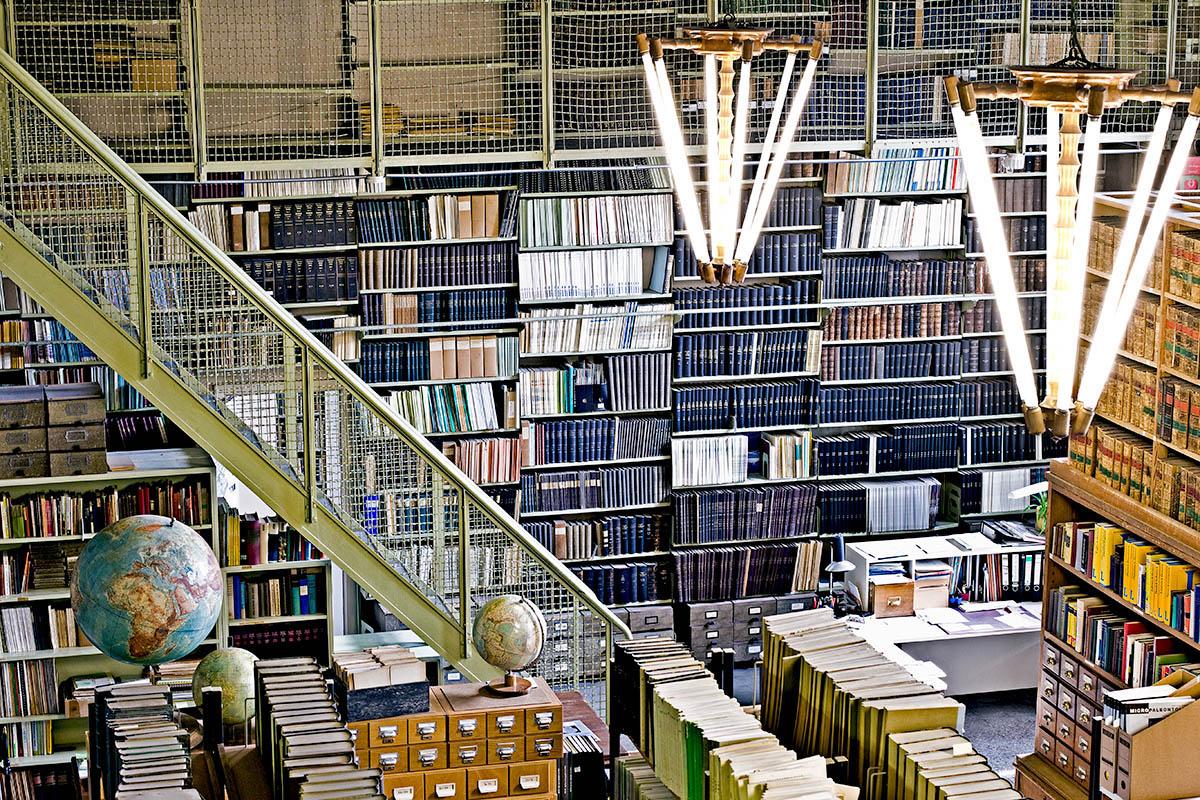As an important scientific information infrastructure and service facility, the library of the Museum für Naturkunde Berlin supports scientists through the entire research process.
The competences of the library are the information gathering and supply as well as the management of paper-based information and digital licenses. Further tasks are the maintenance and digital indexing of the collections of valuable historical books and special monographs, which support the information supply but also have their own historical and scientific-historical value as objects of the collection.
The Museum für Naturkunde Berlin comprises the libraries of the former Zoological Museum, the Palaeontological Museum and the Mineralogical Museum at the Friedrich-Wilhelms-Universität zu Berlin. All in all, the library holds 374,000 items (including maps and extracted articles). The library subscribes to over 700 printed journals and 5,262 e-journals (as of 2015), which are spread over approx. 15 different locations within the museum.
History
The libraries were founded at the same time as the Berlin University in 1810. The Zoological library has remained one of the most important reference libraries in the German-speaking world, with material dating back to the 15th century. Many such treasures were part of the library of the Gesellschaft Naturforschender Freunde zu Berlin (Society of Naturalist Friends in Berlin), founded in 1773. It had illustrious naturalist members, such as Rudolf Virchow, Adalbert von Chamisso, Robert Bunsen, Alfred Brehm, Georges Cuvier, Ernst Haeckel, Jean Baptiste de Lamarck, and Alexander von Humboldt, to name just a few. Many volumes contain personal notes by the scientists, which makes them unique and adds to the special ambiance of the library. Several special collections have a special relevance as historical documents, such as the apicultural library of the owner of Berlin’s gas works and dedicated beekeeper, Edward Drory (1844-1904), which contains approximately 2,400 volumes of literature from the 16th to the 19th century, or the historical map collection that once belonged to the famous geologist Leopold von Buch.
Access
The library at the Museum für Naturkunde offers access to printed and digital information in the fields of zoology, palaeontology, mineralogy geology, natural history and the history of science. It is a reference library, primarily used by staff at the Museum, but also available to interested specialists. A colour scanner is available that allows visitors to scan and save the results on their own USB stick.
Scientific publishing
The library provides consulting and publication services for scientific publishing.
The management of publication references, Open Access, funding opportunities and initial information on legal aspects of publishing are relevant topics in the consulting. The aim will be to build up internal training courses for scientific publishing and thus, through this consultation, to provide scientists with decision-making aids for their own publication strategy.
The museum also offers three original Open Access publication platforms, the Deutsche Entomologische Zeitschrift, Fossil Record and Zoosystematics and Evolution, which cover a wide range of topics in the natural sciences.
Digital Catalogues and Databases
Catalogues
- PRIMO: Entries in the Museum Library from 1963 onward. Only a selection of publications up to 1962 is included and complemented by a conventional alphabetical card catalogue.
- Zeitschriftendatenbank (ZDB): Journals and Periodicals in German libraries.
- Kooperativer Bibliotheksverbund Berlin-Brandenburg (Cooperative network of libraries in Berlin and Brandenburg)(KOBV): The most important catalogues in Berlin-Brandenburg.
- Karlsruher Virtueller Katalog (Karlsruhe Virtual Catalogue)(KVK): All German network catalogues and a selection of international catalogues.
Digital Databases
The following selection of resources is available on the Museum’s Intranet.
- JSTOR Museum Collection
- Science Citation Index (with archive from 1995 and Zoological Record from 1864 onward) und Journal citation reports - ScienceBiodiversity Heritage Library
- Biodiversity Heritage Library
Electronic Journals
Please note that the electronic journals have been licensed to the Museum für Naturkunde. They can therefore only be accessed on the Museum’s premises.
- Elektronische Zeitschriftenbibliothek (Electronic Journal library) - EZB (sorted according to subject)
- Elektronische Zeitschriftenbibliothek (Electronic Journal library) - EZB (sorted alphabetically)
Historical Material
- Historical Material (sorted according to titles)
- Historical Material (sorted according to authors)
Resources listed under Historical Material are subject to creative commons licensing: CC BY-NC-ND 3.0. These works and contents may be copied, distributed and made available to the public.
